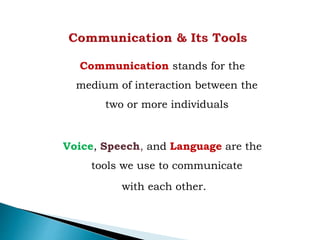Communication involves interaction between individuals using voice, speech, and language. Speech is the physical act of talking using muscles to produce sounds that form words. Language refers to a set of shared rules that allow people to express ideas in a meaningful way. Children develop these skills from birth through ages 6, with critical periods in the first 3 years when exposure to speech and language helps the brain develop abilities to communicate.




































